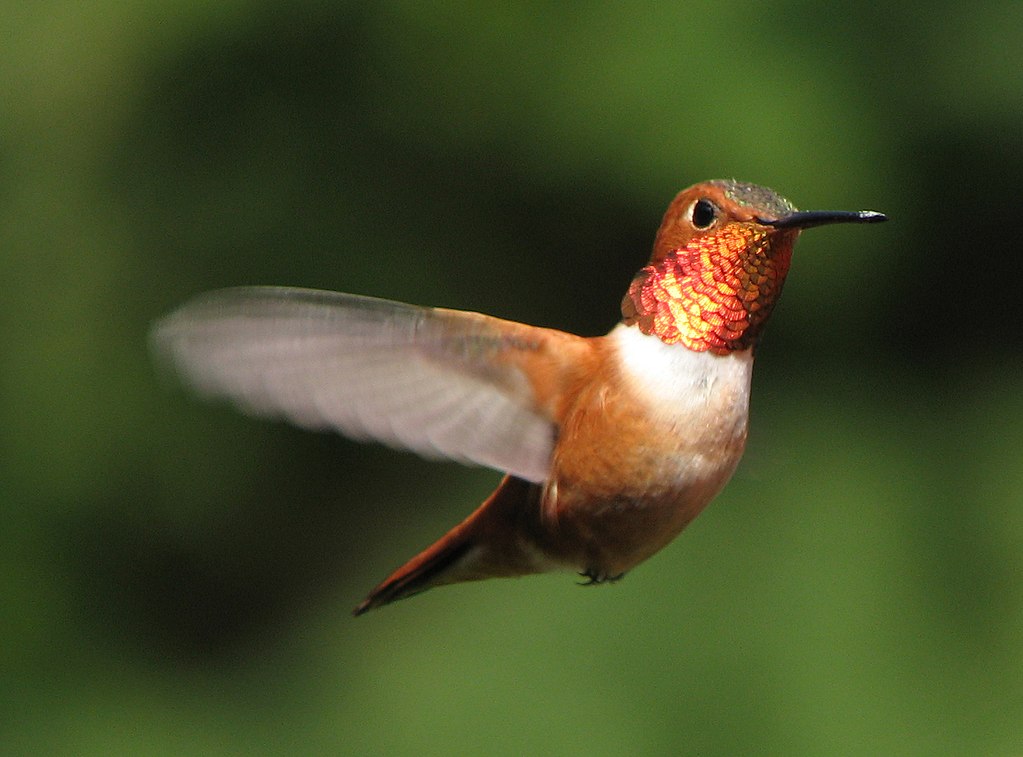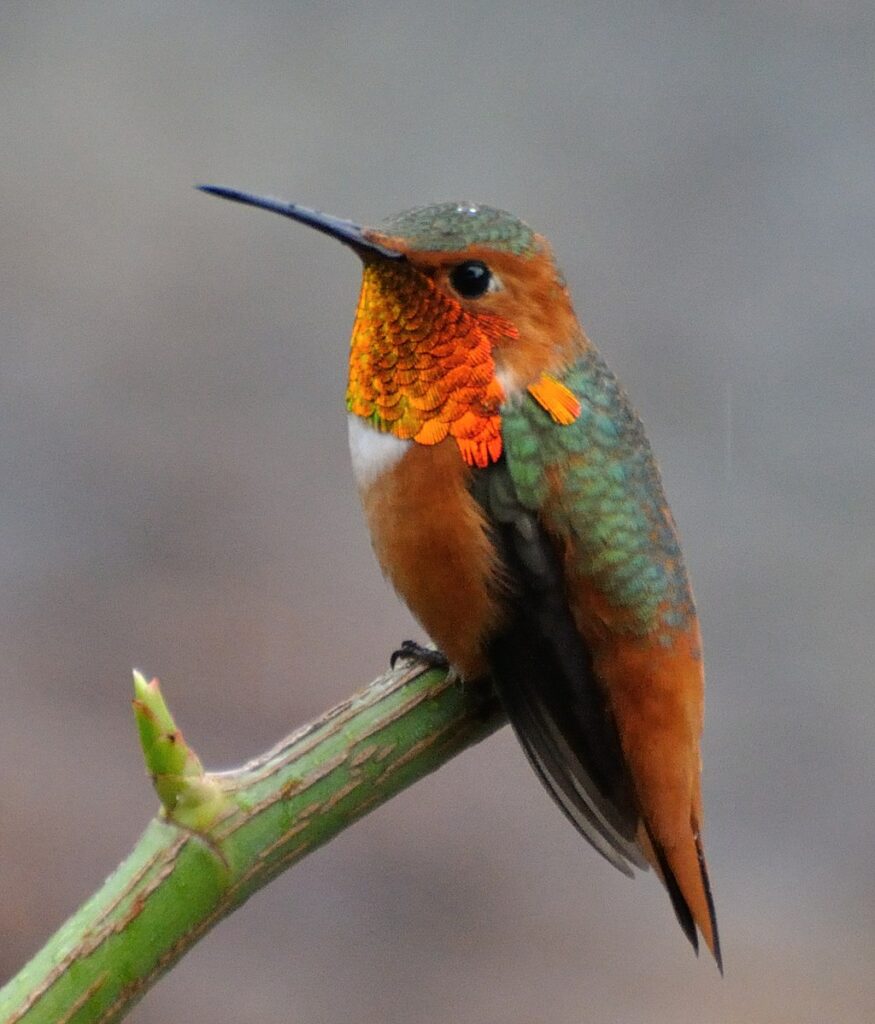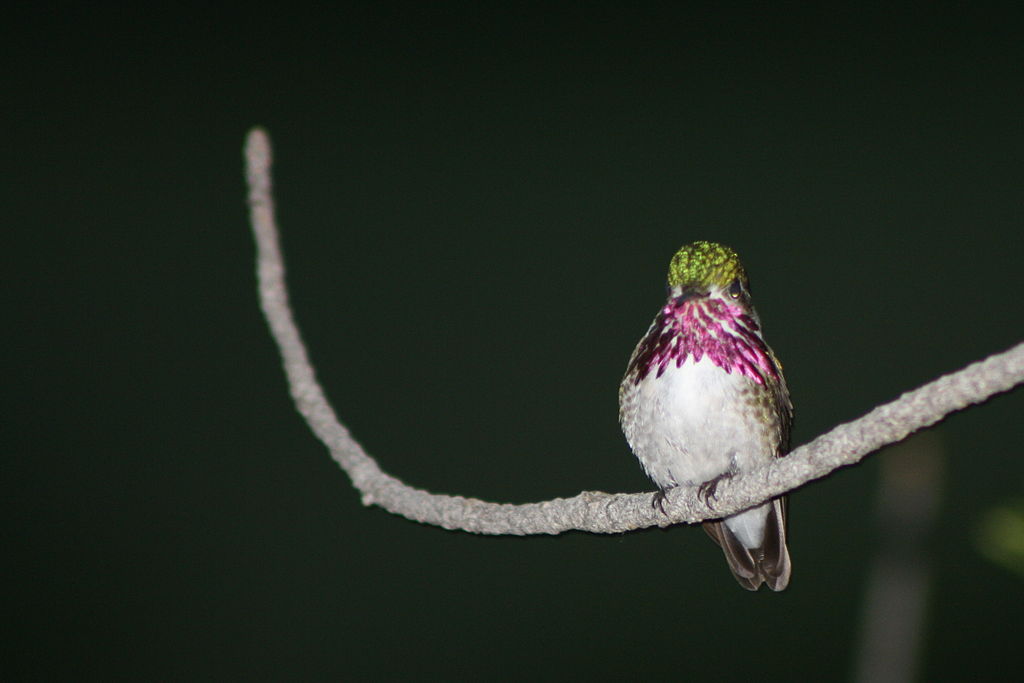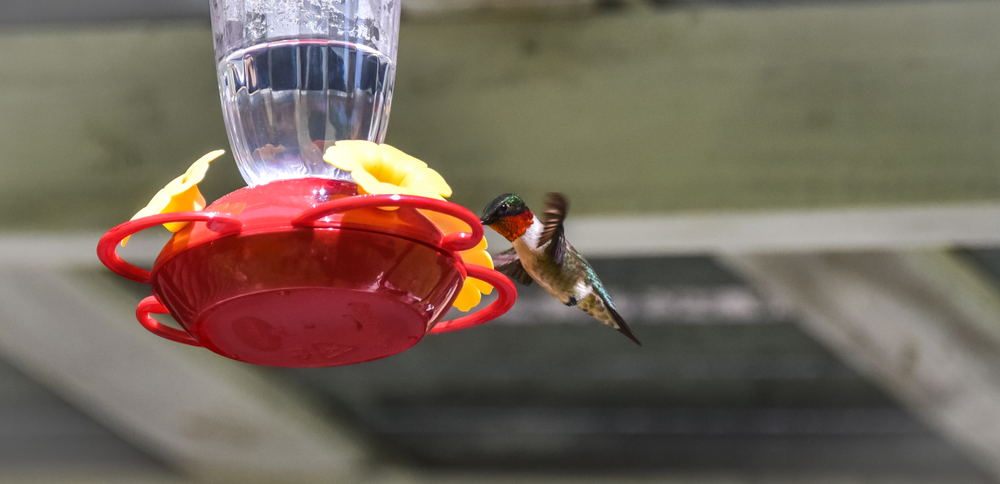Pennsylvania offers a mild climate with plenty of rivers, flowers, and trees to attract hummingbirds in their summer activity. Despite this northeastern state’s harsh winters, balmy weather changes in late spring and early summer give these minuscule birds plenty of shelter among leafy branches and foraging in blooming flowers for their stay.
Today we will examine hummingbirds that live in or visit the Keystone State. According to Operation RubyThroat, an organization founded by the Hilton Pond Center for Piedmont Natural History, Pennsylvania bird-watchers have seen both the native Eastern hummingbird and four other Western hummingbirds. As these Pacific hummingbirds adopt new or stray migration patterns, sightings of these hummingbirds might become even more common in Pennsylvania.
The boisterous colors on each hummingbird species make them very easy to identify–if they stay still long enough to give you a look, that is. Read on so that you might spot some of these beautiful varieties yourself.
Types of Hummingbirds in Pennsylvania
- Ruby-throated Hummingbird- Archilochus colubris
- Rufous Hummingbird- Selasphorus rufus
- Allen’s Hummingbird- Selasphorus sasin
- Calliope Hummingbird- Selasphorus calliope
- Black-chinned Hummingbird- Archilochus alexandri
Ruby-throated Hummingbird- Archilochus colubris

Coloration and Markings: Named for his brilliant red gorget, or throat of each male, this hummingbird boasts an array of distinctive markings. Every Ruby-Throated Hummingbird has feathers of bronze and green along their backs, with pale bellies above their short legs. The female birds of this type will show off a gray-tinted white throat.
Size: This species weighs less than a penny at a mere tenth of an ounce. Adults will grow to be around 3 inches long.
Habitat: Ruby-Throated Hummingbirds often reside in deciduous forests, gardens, parks, citrus tree groves, and wet meadows. They usually build nests along streams where they can find flowering plants and insects nearby.
Diet: Ruby-Throated Hummingbirds maintain a diet of both nectar and insects. They can supply up to 60% of their diet by picking spiders off their webs and eating tiny caterpillars, aphids, and insect eggs from leaves and trees. These Pennsylvania hummingbirds feed on wildflowers like honeysuckle and bergamot and garden varieties like petunia and salvia.
More about Ruby-Throated Hummingbirds
Ruby-Throated Hummingbirds migrate to Pennsylvania in late April to early May each year. Scientists hypothesize that this timeline coincides with the blooming of wild columbine. Being the only hummingbird species to breed east of the Mississippi River, the Ruby-Throated Hummingbird is exceedingly more common than other hummingbird species in the northeastern area. After breeding until late July, the Ruby-Throated Hummingbird will save up nutrients for a long winter migration into southern US states, Mexico, or Central America.
Rufous Hummingbird – Selasphorus rufus

Coloration and Markings: The male Rufous Hummingbird boasts a striking shade of orange, with deep burnt-coal shades along his belly and back. A mature male will sport an iridescent throat of red and green while the females have rust-colored throats and green backs. Though similar in appearance to the Allen’s Hummingbird, a male Rufous Hummingbird may have an entirely green back, while Allen’s males are most often orange with greenish outer feathers.
Size: A tiny hummingbird, Rufous Hummingbirds will mature to be around 3 inches and weigh between 1 and 2 tenths of an ounce.
Habitat: Rufous Hummingbirds tend to live and breed near treelines of deciduous or coniferous forests or open areas of yards, parks, and gardens. Females build nests up to 30 feet high in birch, pine, or spruce trees, with the cover of drooping branches as protection.
Diet: Rufous Hummingbirds feed on both nectar and insects. Some common tubular flowers in their diet include penstemon, lilies, larkspurs, and heaths. This hummingbird can be spotted plucking small insects like gnats and flies in mid-flight.
More about Rufous Hummingbirds
Known for their fiercely protective nature, these hummingbirds are often observed defending their territory, even chasing away chipmunks from their nests. Both sexes are aggressive and prone to launch themselves at other hummingbirds as a display of intimidation. Not only do Rufous Hummingbirds adopt this behavior in their nests, but they can also act protective over areas they occupy during migration.
Allen’s Hummingbird – Selasphorus sasin

Coloration and Markings: The brightest plumage on a male Allen’s Hummingbird is undoubtedly the bright orange and red throat. His head and back feature shades of blue and green, accompanied by softer shades of coppery-orange. The female Allen’s Hummingbirds will remain a slightly duller shade of orange and green, with a spotted green and white throat. With slight differences to the Rufous Hummingbird, the Allen’s Hummingbird will usually sport a more consistent shade of orange across its whole body.
Size: A compact and rounded hummingbird, this type will grow to be 3.5 inches and usually weighs a tenth of an ounce.
Habitat: Native to the West Coast, these hummingbirds prefer to breed along coastal forests, scrub, and chaparral. It is common for males to favor open-air territories while females tend towards covers of eucalyptus, redwood, and douglas-fir.
Diet: Allen’s hummingbirds drink nectar from flowering plants like gooseberry, twinflower, sage, and manzanita. Like other hummingbird species, they also feed on small insects to fulfill their protein needs.
More about Allen’s Hummingbird
Though Allen’s Hummingbirds come from the coasts of California and western Mexico, it has been spotted across the US, as far as Pennsylvania. Sightings of this species in eastern locations may be rare, but the allure of feeders and abandoned native species may provide the necessary encouragement to brave colder weather. Reports note that this more winter-hardy hummingbird can appear in southern Pennsylvania in the winter months, though scientists are still trying to determine the exact reason for this divergence.
Calliope Hummingbird- Selasphorus calliope

Coloration and Markings: A primarily green bird with tints of blue and yellow, the Calliope Hummingbird saves all its majesty for its beautiful throat. Adult male Calliopes show off a deep magenta throat cascading from the bill in bright stripes. The female is colored more conservatively, with a green back and white belly with hints of peach.
Size: As the smallest bird in the US, the Calliope grows to only 3 inches and has a characteristic hunch that further diminishes its size. Like other Pennsylvania hummingbirds, Calliopes weigh only a tenth of an ounce.
Habitat: This type of hummingbird prefers cooler mountain regions for breeding. Calliope Hummingbirds prefer mountain meadows, previously logged forests or thickets near streams.
Diet: This hummingbird favors cup-shaped or tubular flowers that larger hummingbirds do not visit. You can find them feeding on sap wells to forage both sap and insects.
More About the Calliope Hummingbird
Despite their compact size, male Calliopes can be bold and territorial, chasing away intruding hummingbirds from their living area. However, this type is also aware of its limitations, and the Calliope Hummingbird displays caution in choosing food sources as well as subordinating to larger species of hummingbirds during the breeding season.
Black-Chinned Hummingbird – Archilochus alexandri

Coloration and Markings: Thishummingbird species contrasts the other bright-colored throats on this list with deep black throat feathers. When sunlight hits a male’s throat feathers just right, however, a careful watcher can spot shades of dark purple. The backs of males are darker black than the greenish-gray females, making these hummingbirds the most conservatively colored birds on the list.
Size: Like the ruby-throated hummingbird, the Black-Chinned Hummingbird will grow to be around 3 to 3.5 inches and weigh between one- and two-tenths of an ounce.
Habitat: As a more hardy hummingbird species, these tiny creatures can survive even in urban areas, although they prefer tall trees and areas close to water sources. Some of the Black-Chinned Hummingbird’s favorite trees include cottonwood, sycamore, and oak trees.
Diet: Like other hummingbirds, this species makes meals from flower nectar and small insects and spiders. You can entice the Black-Chinned Hummingbird with sugar-water feeders but will be less swayed by color than by flowers near the location.
More About the Black-chinned Hummingbird
Black-Chinned Hummingbirds are distinctly capable of surviving in less-than-ideal situations. They can even completely forego nectar in their diet if they find enough insects to eat. This, along with their less obtrusive colors, may explain how they can thrive even in more developed or disturbed areas.
In Conclusion
We hope you have enjoyed learning about the Pennsylvania hummingbirds that you may spot in your state. With so many lively colors, migration routes, and unique personalities that these little birds have, spotting one for yourself is sure to be just as exciting.
Though hummingbirds’ activity peaks in the summer months, look out for these birds even in the wintertime. Many hummingbirds’ lifespans can reach up to 5-8 years, so you may even be lucky enough to see a feathery friend for many years to come! Until next time, happy birding!
